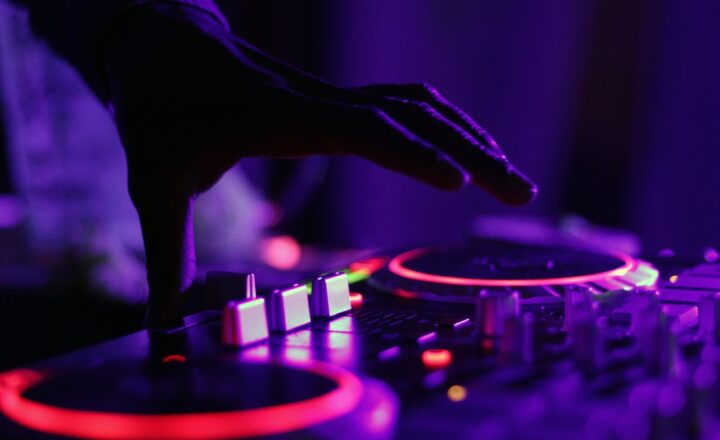Why Retro Aesthetics Are Popular in Today’s Music Videos
November 14, 2024

In the vibrant world of music videos, visuals play an essential role in capturing the audience’s attention and enhancing the narrative of a song. Recently, there’s been a resurgence of retro aesthetics in music videos, drawing inspiration from the styles and trends of past decades. Whether it’s the bright colors of the 80s or the nostalgic feel of 90s grunge, retro aesthetics are making waves in contemporary music. But why is this nostalgic revival so popular?
1. The Appeal of Nostalgia
Nostalgia is a powerful emotion, often providing comfort and a feeling of connection to a simpler time. For many viewers, especially millennials and Gen Z, retro aesthetics tap into their childhood memories or the cultural zeitgeist of previous eras. This trend allows artists to reach a broader demographic by appealing to both older audiences who experienced the original eras and younger audiences who find these styles intriguing.
The nostalgia factor in music videos can evoke feelings of familiarity and warmth. For example, the resurgence of VHS tape effects, grainy visuals, and retro fashion serve as comfort food for the visual senses. Music videos like Dua Lipa’s “Don’t Start Now” and The Weeknd’s “Blinding Lights” highlight how effective retro visuals can amplify emotional connections to the music.
2. Creative Expression and Artistic Freedom
Embracing retro aesthetics also provides artists with a unique canvas for creative expression. Many contemporary musicians see the retro revival as an avenue to play with various styles, mixing and matching to create something new yet familiar. The eclectic nature of retro visuals allows for artistic liberty, where artists can draw inspiration from multiple decades in liberated ways.
For instance, Lizzo’s vibrant and colorful visuals blend elements from the 70s disco era with modern pop culture. Such fusions showcase not only the diversity of visual styles but also the evolving landscape of creativity in the music industry. This artistic freedom breeds innovation while honoring the music that came before.
3. Social Media and the Viral Trend Factor
The rise of social media platforms has transformed how music is consumed and shared. Retro aesthetics are often highly shareable, making them an ideal choice for artists aiming to maximize their reach. Platforms like TikTok and Instagram, which thrive on visual content, love retro-inspired music videos as they are instantly eye-catching and encourage engagement.
TikTok challenges and memes often utilize snippets from music videos with retro aesthetics, helping songs gain virality in ways traditional marketing could never achieve. This viral potential prompts artists to incorporate retro elements into their videos to increase sharing and enhance visibility.
4. A Reaction to Modernity and Technological Overload
We live in an age where technology permeates every aspect of our lives. The sleek, polished aesthetics of digital media can often feel artificial. As a result, many artists are embracing retro aesthetics as a countercultural response to this technological overload. This desire to revert to the past may stem from a longing for more tangible, relatable experiences.
The warm tones, imperfect textures, and handcrafted elements found in retro aesthetics create a sense of authenticity that contrasts sharply with the clinical feel of modern digital productions. Music videos that channel retro styles often convey a more human touch, evoking emotions associated with real-life experiences.
5. Collaboration with Influential Styles and Iconic Artists
Many contemporary musicians openly cite influences from old artists, styles, and movements that shaped the music industry. Collaborating with themes that harken back to classic genres—like soul, funk, or disco—introduces a retro flair to their videos.
The success of acts like Bruno Mars and Anderson .Paak, who seamlessly incorporate 70s and 80s funk into their music, showcases how artists are not just borrowing visually but are also grounded in the musical influences of past decades. Their music videos often reflect this connection, drenched in bold colors and fashion reminiscent of yesteryears.
6. Tapping into Cultural Movements and Revivals
Music is deeply rooted in cultural movements, and retro aesthetics often correspond with societal trends. For instance, as fashion from the 90s makes a comeback in clothing lines, it becomes natural for musicians to adopt similar styles in their visuals. This dynamic intertwining helps spark a cultural dialogue and brings attention to the nostalgia that current generations feel towards previous decades.
In this way, artists create a sense of belonging among their audiences, fostering connections over shared memories and cultural references. This makes their work resonate deeper and places them within a broader cultural context that engages more than just the music itself.
Conclusion
The rise of retro aesthetics in today’s music videos demonstrates the power of nostalgia, creative expression, and cultural context. As artists seek to connect with diverse audiences and counterbalance the overwhelming nature of modernity, retro visuals stand as iconic reminders of the past while creatively reshaping contemporary music. This trend is likely to endure as artists continue to experiment with the rich tapestry of influences that shape their unique styles, inviting us to reflect on our history while enjoying the music of today.
In a world filled with constant change, the resurgence of retro aesthetics offers a delightful respite—a playful nod to the past that brings color, emotion, and authenticity back into the visual realm of music.







